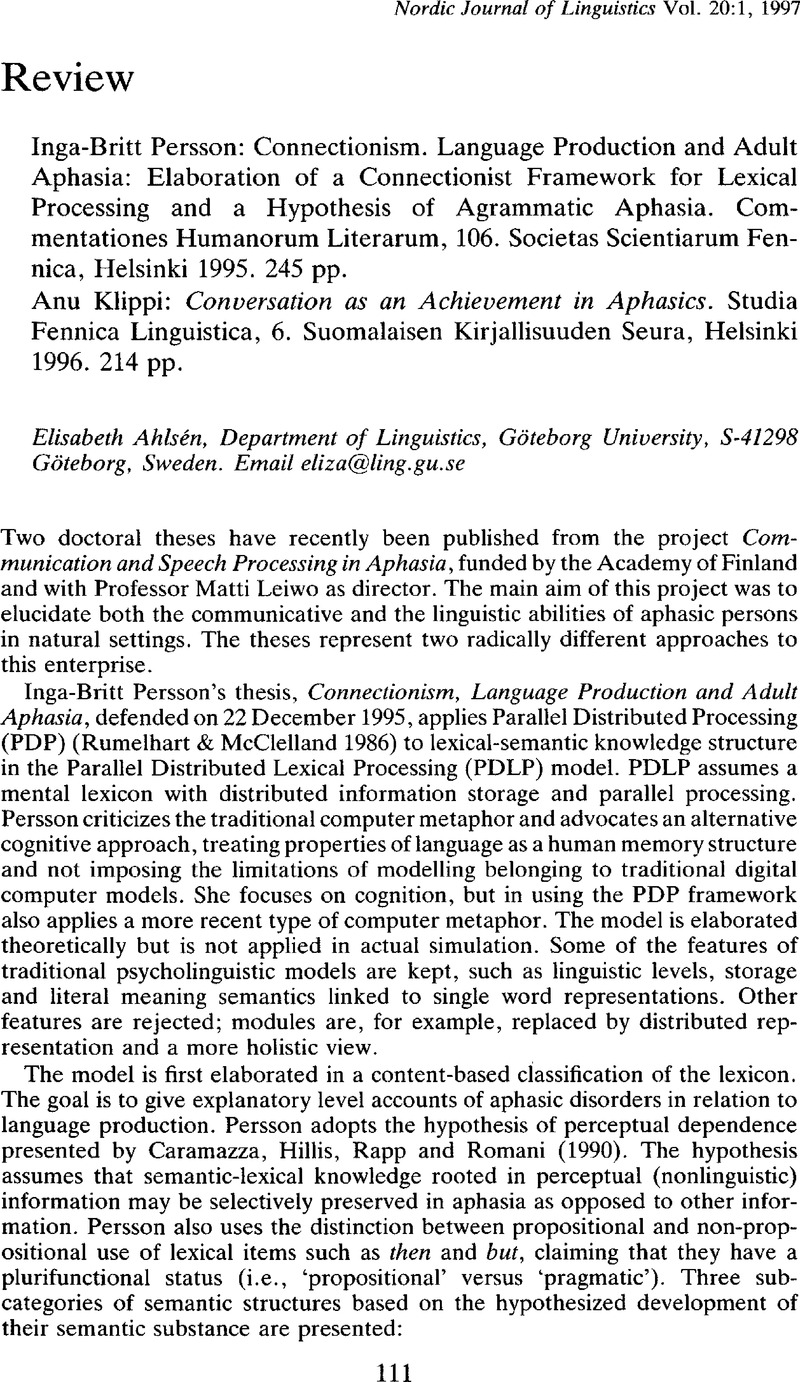Article contents
Inga-Britt Persson: Connectionism. Language Production and Adult Aphasia: Elaboration of a Connectionist Framework for Lexical Processing and a Hypothesis of Agrammatic Aphasia. Commentationes Hurnanorum Literarum, 106. Societas Scientiarum Fennica, Helsinki1995. 245 pp. - Anu Klippi: Conversation as an Achievement in Aphasics. Studia Fennica Linguistica, 6. Suomalaisen Kirjallisuuden Seura, Helsinki1996. 214 pp.
Published online by Cambridge University Press: 14 October 2010
Abstract

- Type
- Review
- Information
- Copyright
- Copyright © Cambridge University Press 1997
References
REFERENCES
- 1
- Cited by




